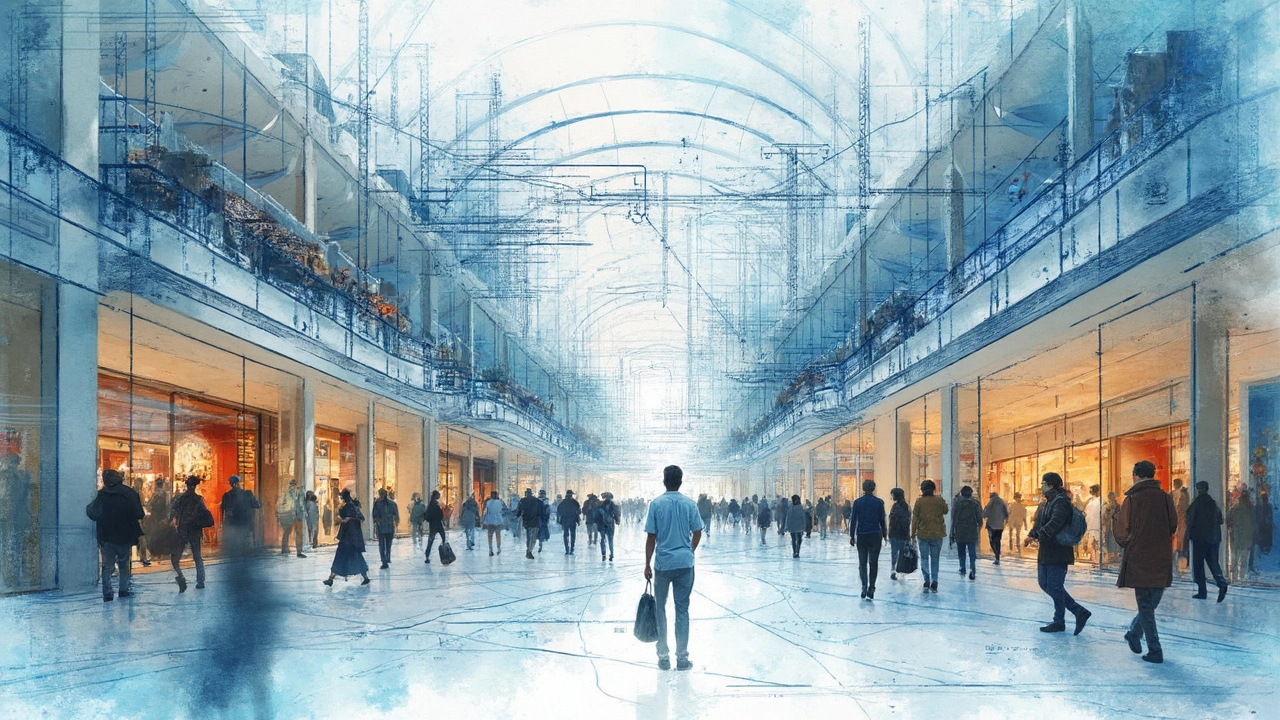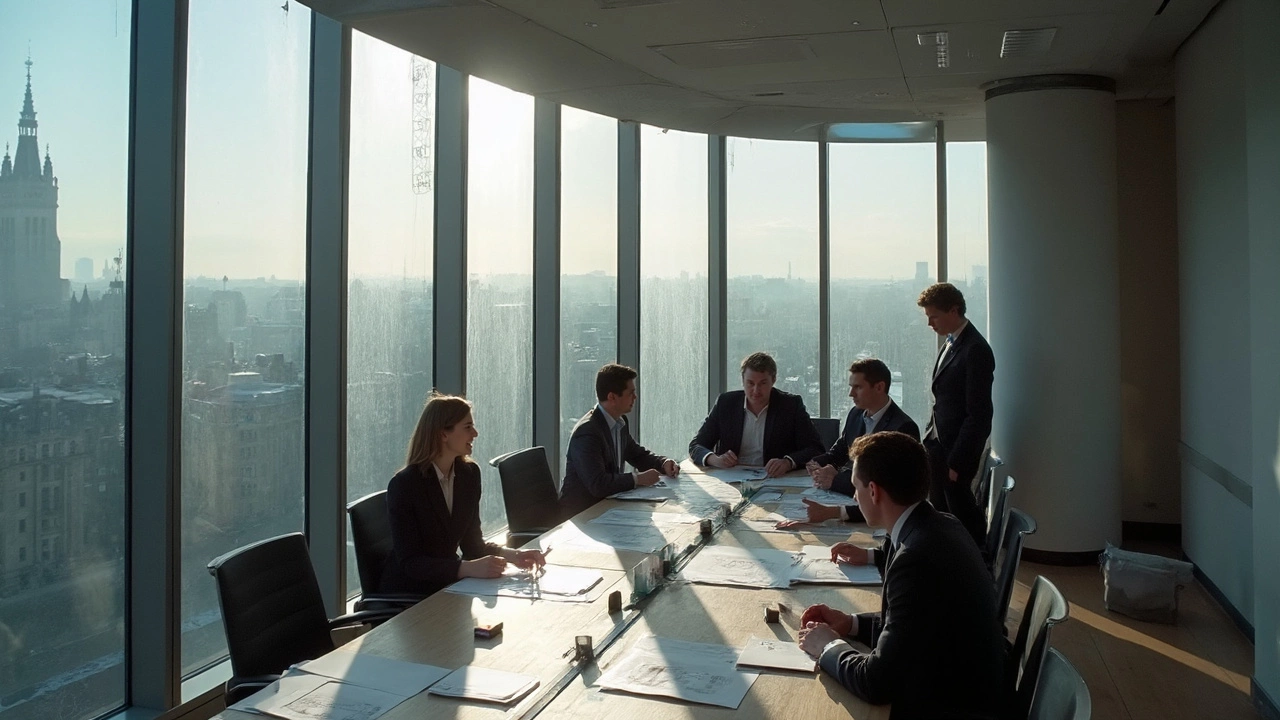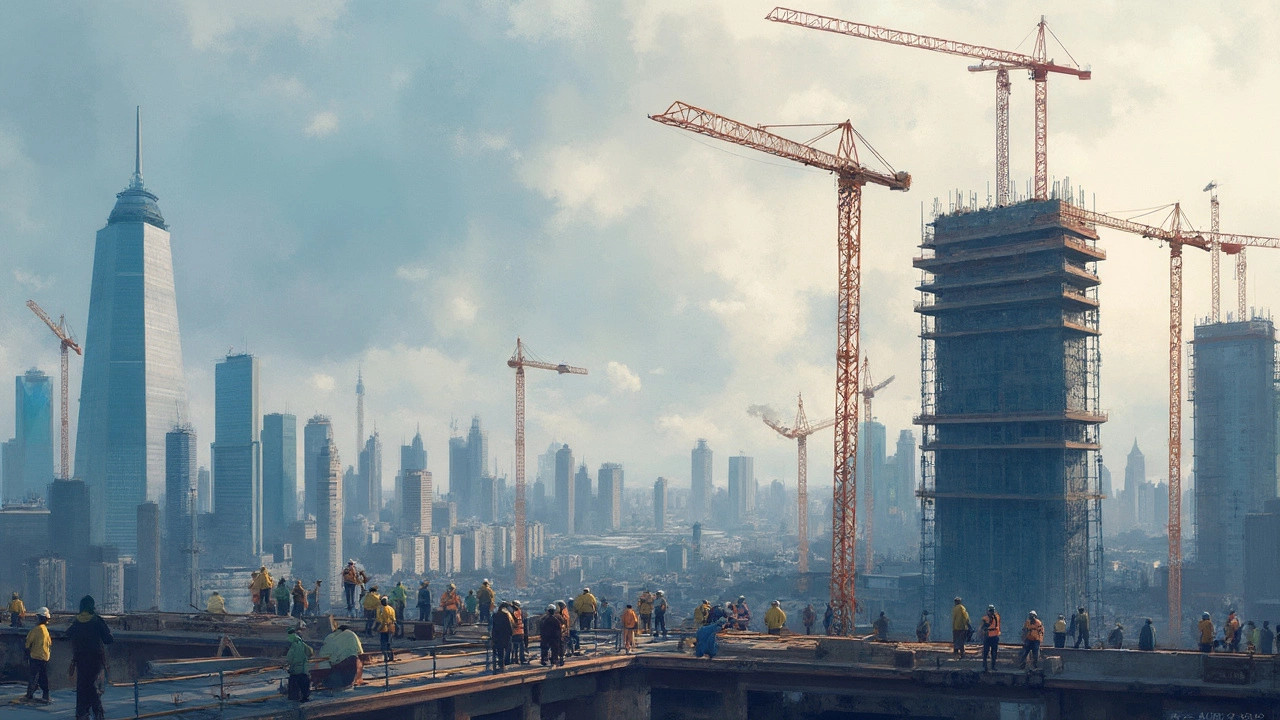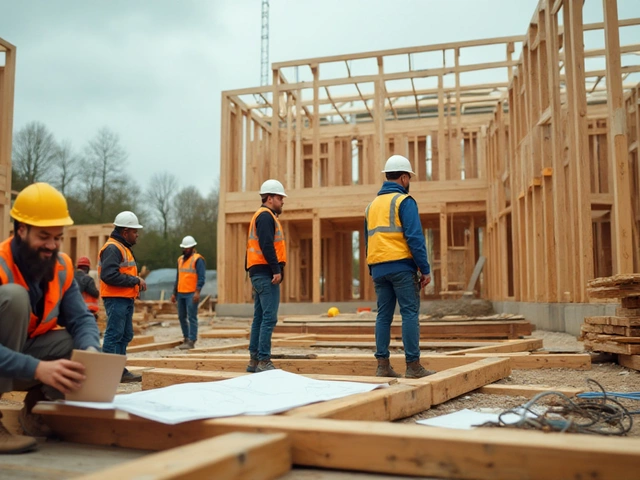So what exactly is classified as commercial construction? Well, think of those towering office buildings, sprawling shopping malls, and bustling hotels. These are all part of the commercial construction realm. It's not just about erecting any structure; it's about creating spaces where business happens. Sounds intriguing, right?
Commercial construction is a crucial part of our daily lives. It's not limited to just high-rises and malls though; even the local community center or that trendy new restaurant falls into this category. Understanding the specifics of what makes a project commercial is essential, especially if you're diving into the world of construction.
One interesting fact? Globally, the commercial construction industry was valued at over $10 trillion in 2023. That's quite a scale, showing just how significant this sector is! Whether you're planning a new build or just curious, knowing what constitutes commercial could make all the difference.
- Defining Commercial Construction
- Types of Commercial Buildings
- Key Features of Commercial Projects
- Differences Between Commercial and Residential Construction
- Tips for Successful Commercial Construction
Defining Commercial Construction
When we talk about commercial construction, we're delving into the heart of structures meant primarily for business activity. Whether it’s a place where products are sold or services are offered, if it's hosting a business, it likely falls under this category.
Commercial construction covers a wide range. Common examples? Office buildings, shopping centers, warehouses, and even hospitals. They're typically larger than residential structures and often more complex. That's because they need to accommodate multiple users, comply with stricter codes, and often have more specialized features, like elevators and escalators in a shopping mall.
Why is it Different?
The reasons behind its distinct classification include scale, purpose, and complexity. Unlike residential construction, which focuses on personal living space, commercial spaces are designed for public access and specific business functions.
One important aspect of commercial projects is zoning laws. These govern where business activities can happen, ensuring that a factory isn't built next to a quiet neighborhood. This distinction is crucial for maintaining city livability and services.
Commercial Construction Types
Here's a quick run-through of some common types:
- Retail: Think about your local supermarket or an outdoor shopping plaza.
- Office: Any building where business admin work goes on. From sleek high-rises to cozy business parks.
- Healthcare: Facilities like clinics and hospitals fall under this category.
- Industrial: These are factories or similar structures generally found in designated industrial areas.
Count the Costs
Costs can be a significant concern. On average, commercial construction can range widely based on location and complexity, from around £100 per square foot for something basic up to several hundreds for specialized facilities. That's why budgeting is a key phase in planning.
Armed with this understanding of commercial construction, you're better positioned to navigate this expansive field, whether you're involved in the industry or just curious about why that massive new building's going up in your town.
Types of Commercial Buildings
When we talk about commercial construction, the variety of buildings is vast and each serves its unique purpose. From where we work to where we play, let's break down some of the most common types.
Office Buildings
Perhaps the most familiar, office buildings come in all shapes and sizes. You've got your skyscrapers downtown filled with multiple tenants, right down to the smaller standalone offices scattered across town. These buildings require meticulous planning for elements like ventilation, lighting, and tech infrastructure to keep them running smoothly.
Retail Spaces
Next up, those bustling shopping centers and quaint boutique stores. Retail spaces are specifically designed to enhance customer experience while efficiently showcasing products. Factors such as foot traffic and location are key in deciding where and how they are built.
Hotels and Hospitality
The hotel you've stayed at during vacations is another example of commercial buildings. These structures are not just about aesthetics; they focus highly on customer comfort and operational efficiency, ranging from budget accommodations to luxury resorts.
Industrial Structures
While not the first thing that comes to mind, warehouses and manufacturing sites also fit the bill. These buildings are all about space and functionality, often needing strong foundations to support heavy machinery and ample space for logistics.
Healthcare Facilities
Hospitals and clinics provide critical services, making them a vital part of the commercial landscape. Constructing healthcare facilities involves strict regulations and intricate designs to ensure safety and effective patient care.
Each type of commercial building requires a particular set of expertise and considerations to meet its intended use. By understanding these categories, professionals in the industry can better plan and execute projects that meet the needs of businesses and consumers alike.
| Type | Common Features |
|---|---|
| Office Buildings | High-tech infrastructure, flexible interior design |
| Retail Spaces | Strategic location, customer-oriented design |
| Hotels | Guest amenities, aesthetic appeal |
| Industrial Structures | Space efficiency, durable materials |
| Healthcare Facilities | Safety compliance, specialized equipment |

Key Features of Commercial Projects
Commercial construction might look dazzling on the outside, but it's the nitty-gritty details that make it unique. These projects stand apart because they cater specifically to business needs, making them more complex and high-stakes.
Scale and Scope
One major feature is the sheer size. Unlike residential buildings, commercial construction projects often cover large areas and can stretch several stories high. We're talking enormous warehouses, expansive shopping centers, and towering business headquarters. This larger scale demands meticulous planning and high precision to ensure safety and functionality.
Regulatory Requirements
Another feature is the specific regulations that govern them. Approval isn't just a tick-box exercise; it involves comprehensive compliance with strict standards. Safety codes, accessibility laws, and environmental regulations are just some of the boxes that need checking. Workplaces must be safe and easily accessible, with amenities like lifts for the differently-abled.
Infrastructure and Utilities
Commercial buildings house more people and machinery, so their infrastructure requirements are quite different from residential buildings. They need robust power setups, high-speed internet, and state-of-the-art security systems. Plus, efficient HVAC systems are crucial to maintain comfortable climates no matter the weather outside.
Design Complexity
The design aspects of commercial projects are also worth discussing. They often feature sophisticated architectural designs that blend functionality with aesthetics. A retail store, for instance, isn't just about accommodating products; it's about creating an inviting atmosphere that encourages shoppers to linger and buy more.
| Feature | Importance |
|---|---|
| Large Scale | Requires detailed planning |
| Comprehensive Regulations | Ensures legal compliance |
| Advanced Infrastructure | Supports business operations |
| Complex Design | Enhances customer experience |
If you're thinking of venturing into the world of commercial construction, understanding these key features is crucial. They form the foundation of successful projects and highlight why this sector is a pivotal part of modern infrastructure.
Differences Between Commercial and Residential Construction
When it comes to construction, commercial construction and residential construction may seem similar at first glance, but dig a bit deeper, and you'll find they operate in different worlds. Here are some key differences:
Purpose and Use
Commercial construction is all about creating spaces for business activities. Think office buildings, shopping centers, and factories. On the other hand, residential construction focuses on housing people, whether in single-family homes, apartments, or townhouses. So, the end-use heavily influences the project requirements.
Regulations and Codes
Commercial projects often face stricter regulations compared to residential ones. There are more comprehensive zoning laws, fire codes, and environmental standards. Safety is paramount, especially when these buildings regularly hold larger crowds. Residential construction follows local housing codes that ensure safe living environments but are generally less intricate.
Scale and Complexity
Most commercial construction projects are larger in scale and complexity compared to residential builds. With high-rise office towers or sprawling manufacturing facilities, the stakes, and project logistics, can get quite demanding. Residential projects, while still challenging, often have a smaller team and scope.
Materials and Design
The materials used in commercial construction are typically more durable and capable of handling heavy usage—from reinforced steel frames to high-strength concrete. Meanwhile, residential construction often focuses more on comfort and aesthetics, with materials like wood and drywall being common.
Timelines and Budgets
Budgeting and timelines differ greatly too. Commercial projects can have elongated timelines due to their size and complexity, often with a larger budget to accommodate the scale. Residential constructions tend to have tighter schedules and budget constraints because the demand for housing requires quicker completion times.
Both sectors have their unique challenges and rewards, and understanding these differences is key whether you’re planning a commercial construction project or just curious about the industry dynamics.

Tips for Successful Commercial Construction
Getting commercial construction right can seem daunting, but with a few key tips, you're well on your way to a successful project. Let's break it down into some practical advice you can actually use.
Plan Thoroughly
The cornerstone of any great project? Planning, and lots of it! This means not just drawing blueprints but also considering things like zoning laws and environmental impacts. Delays in commercial construction often stem from not having a detailed enough plan.
Choose the Right Team
Your team can make or break your project. From architects to contractors, selecting professionals who have experience with commercial projects is crucial. Check past projects and references. A skilled crew is your biggest asset.
Budget Wisely
You might think budgeting is all about cutting costs, but it's actually about investing in quality. Know where your money is going and ensure each penny is well-spent. Reserve funds for unforeseen issues; savings in construction can save a lot of headaches later.
Stay on Schedule
Time is money—literally, in construction. Track your project timeline closely. Regular site visits and open communication can keep you on track. A realistic schedule also helps in avoiding costly overtime wages.
Embrace Technology
In 2023, over 60% of construction firms reported using digital tools for project management. Tools like BIM (Building Information Modeling) can improve efficiency and help foresee potential problems. Don't shy away from tech; it can be your best friend.
| Tech Tools | Usage |
|---|---|
| BIM | Project visualization |
| Construction Management Software | Budgeting and timeline tracking |
Each of these steps contributes to a more streamlined, less stressful experience. So whether you're planning the next big mall or a chic office, keeping these tips handy can make commercial construction a bit more manageable.





